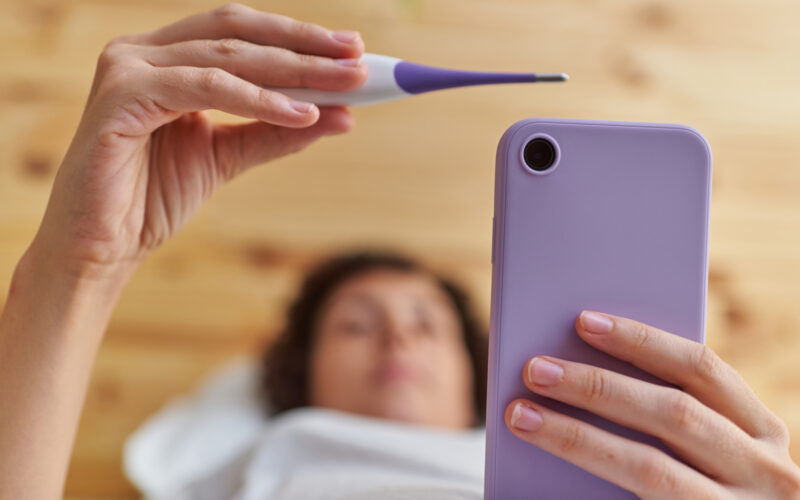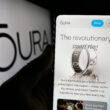Если вы хотите купить термометр базальной температуры тела для составления графиков фертильности, то вам повезло - сегодня существует практически бесконечное множество вариантов! Если вам нужны только основы или все возможные функции, в нашем списке вы найдете бюджетный вариант, $300+, а также все, что находится между ними! По своей сути (простите за каламбур!) базальный термометр является ключевым для составления графика симптоматического метода определения фертильности, но некоторые из этих приборов способны на гораздо большее. Читайте далее обзор инструментов для измерения температуры.
Краткая информация о составлении графика температуры для использования НК/ФАМ
Симптотермический метод определения фертильности (FAM) или естественного планирования семьи (NFP) требует измерения базальной температуры тела (BBT). (Хотя симптомно-термический метод информирования о рождаемости является наиболее популярным метод использовать BBT, другие, такие как FEMM или Boston Cross Check, также могут его использовать).
BBT это самая низкая температура тела, когда организм находится в состоянии покоя. Если вы составляете график BBT, то обычно измеряете температуру сразу после пробуждения, когда вы еще лежите в постели. Носимые термометры BBT (о которых мы поговорим ниже) измеряют температуру во время сна, используя алгоритм для точного измерения BBT.
В двух словах, овуляция коррелирует с повышением BBT из-за происходящих гормональных сдвигов. Эти повышения температуры обычно весьма незначительны - несколько десятых долей градуса, поэтому термометры BBT измеряют температуру с точностью до десятых или сотых долей. Если вы отслеживаете свою BBT, у вас будет базовая низкая температура в первой половине цикла, повышение во время овуляции, базовая высокая температура в лютеиновой фазе, а затем снижение до низкого уровня после начала менструации.
Замечание о сравнении оральных и носимых базальных термометров для тела
Все исследование В исследованиях, посвященных эффективности симптоматического метода, используется оральный (или вагинальный) термометр, а женщины измеряют BBT сразу после пробуждения [1]. Технология носимого ББТ все еще относительно нова, поэтому ее непосредственное изучение в сочетании с конкретным методом повышения фертильности еще не проводилось.
Тем не менее, есть несколько исследования который дать чрезвычайно многообещающие данные об эффективности использования носимых технологий для регистрации BBT и точного определения овуляции [2][3][4]. Если вы собираетесь приобрести носимое устройство, обязательно ознакомьтесь со страницей бренда, посвященной его эффективности, поскольку некоторые устройства провели свои собственные уникальные исследования.
Носимые термометры BBT имеют одно огромное преимущество перед традиционным оральным термометром - вам не нужно беспокоиться о том, чтобы проверить свою температуру немедленно после пробуждения! Особенно если у вас нестандартный график сна (из-за того, что ребенок просыпается по ночам, сменная работа или вам трудно заснуть), наличие носимого датчика BBT может стать спасением.
Линейка: какой инструмент выбрать?
Давайте рассмотрим некоторые из наиболее популярных вариантов отслеживания BBT. Каждое из перечисленных устройств будет содержать описание того, как оно используется, его плюсы и минусы, а также сравнение цены с некоторыми другими инструментами. Когда речь заходит об устройствах для измерения BBT, выбор практически бесконечен, но здесь приведены лишь некоторые из наиболее распространенных.
Базовый оральный базальный термометр для тела
Базовый оральный базальный термометр для тела можно найти в любой аптеке или на сайте Amazonи, как правило, $10 или меньше. Некоторые модели имеют дополнительные функции, например, более быстрое время считывания или подсветку, чтобы вы могли посмотреть температуру в темноте, но все они в основном делают только одно: определяют температуру. Многие из этих термометров можно использовать орально или вагинально, но наиболее распространенным и рекомендуемым вариантом является оральное использование. (Обратите внимание, что потенциальные опасения при вагинальном использовании включают риск инфицирования и возможность ссадин на тканях влагалища).
Самый большой плюс базового термометра - это цена: они невероятно доступны и их легко найти где угодно! Если вы используете этот вариант, вам просто нужно убедиться, что вы измеряете температуру сразу после пробуждения и перед тем, как встать с постели, а затем записываете показания на бумаге или в цифровой таблице. Недостатком этого способа является то, что иногда бывает трудно не забыть измерить температуру сразу же (особенно если вы часто просыпаетесь с маленькими детьми), особенно если вам приходится ждать минуту или две, пока термометр сработает.
Оральные базальные термометры для тела, синхронизирующиеся с приложением
NaturalCycles
NaturalCycles предлагает несколько продуктов. Один из вариантов - оральный термометр, который синхронизируется по Bluetooth с платным приложением для составления графиков. В качестве альтернативы можно просто купить приложение и сопрячь его с часами Apple или кольцом Oura. Другой вариант - купить их базовый оральный термометр (без синхронизации по Bluetooth) или любой другой термометр BBT и ввести эти данные в приложение.
NaturalCycles уникальна тем, что использует свой собственный алгоритм чтобы определить, насколько вы фертильны. Введя данные о температуре, приложение NaturalCycles определит, находитесь ли вы в фертильном периоде, используя систему "красных" (фертильных) и "зеленых" (нефертильных) дней. Нефертильное окно будет постепенно увеличиваться по мере того, как алгоритм приложения будет изучать ваше тело, что позволит вам выбрать более "безопасные" дни для секса, если вы пытаетесь избежать беременности.
Это одна из главных причин популярности NaturalCycles - оно избавляет вас от многих хлопот, связанных с расчетом фертильности. Изучение такого метода, как FAM, требует времени и усилий, но такие приложения, как NaturalCycles, упрощают эту задачу. Однако эффективность NaturalCycles составляет всего 93%, в то время как симптотермальный метод имеет Эффективность 99%.
Отчасти это связано с тем, что симптоматический метод включает в себя и другие признаки фертильности, такие как цервикальная слизь или положение шейки матки. Это также связано с тем, что использование метода FAM позволяет женщине полностью контролировать и понимать свою фертильность. Приложение, которое говорит вам, когда вы (вероятно) фертильны или нет, не обладает таким же глубоким пониманием вашего тела, как вы сами, особенно если оно использует только один признак фертильности, например температуру.
Стоимость NaturalCycles составляет $120 в год или $17 в месяц, включая бесплатный базовый термометр.
Daysy
Daysy похож на NaturalCycles тем, что имеет собственный алгоритм, который автоматически вычисляет, находитесь ли вы в фертильном периоде. В отличие от NaturalCycles, пользователям достаточно взглянуть на сам термометр (который подключается к приложению через bluetooth), чтобы определить свой фертильный статус. Термометр Daysy загорается красным цветом, если вы фертильны, и зеленым, если не фертильны. Вы также можете просмотреть эти данные в приложении для составления графиков.
У Daysy много тех же недостатков, что и у NaturalCycles, включая тот факт, что он полагается исключительно на температуру. Однако пользоваться им очень просто, тем более что он выдает показания фертильности сразу после измерения температуры.
В отличие от ежегодной или ежемесячной платы NaturalCycle, у Daysy единовременная стоимость термометра и доступа к приложению составляет $319.
Другие "умные" оральные базальные термометры для тела
Если вы все еще хотите приобрести оральный базальный термометр, но желаете иметь больше возможностей, чем в аптеке, на рынке представлено множество "умных" термометров. Эти устройства представляют собой обычные термометры BBT, но они сопряжены с приложением через Bluetooth, так что показания температуры автоматически синхронизируются каждое утро. Затем вы можете зайти в приложение, чтобы записать другие симптомы и использовать метод FAM для составления графика (а не алгоритм, определяющий ваш фертильный статус за вас).
Примеры включают Easy@Home и ФемометрОбычно они стоят от $35 до $50. Некоторые из этих устройств также помогут определить линию покрытия температуры (это линия, разделяющая низкие температуры до овуляции и высокие температуры после овуляции) или подскажут вам фертильные и нефертильные дни. Однако, в отличие от двух предыдущих устройств, составление графика симптомов остается за вами. Эти "умные" термометры могут стать отличным вариантом, если вам нравится идея автоматической синхронизации и вы хотите получить немного больше рекомендаций по составлению графика BBT, но не хотите, чтобы приложение определяло ваши фертильные дни за вас.
Но это еще не все...
Здесь мы расскажем вам о том. оральный варианты наблюдения за базальной температурой тела для составления графика фертильности. На сайте часть 2 В этой серии из двух частей мы расскажем о носимых инструментах для измерения времени (вспомните TempDrop и кольцо Oura, среди прочих!).







